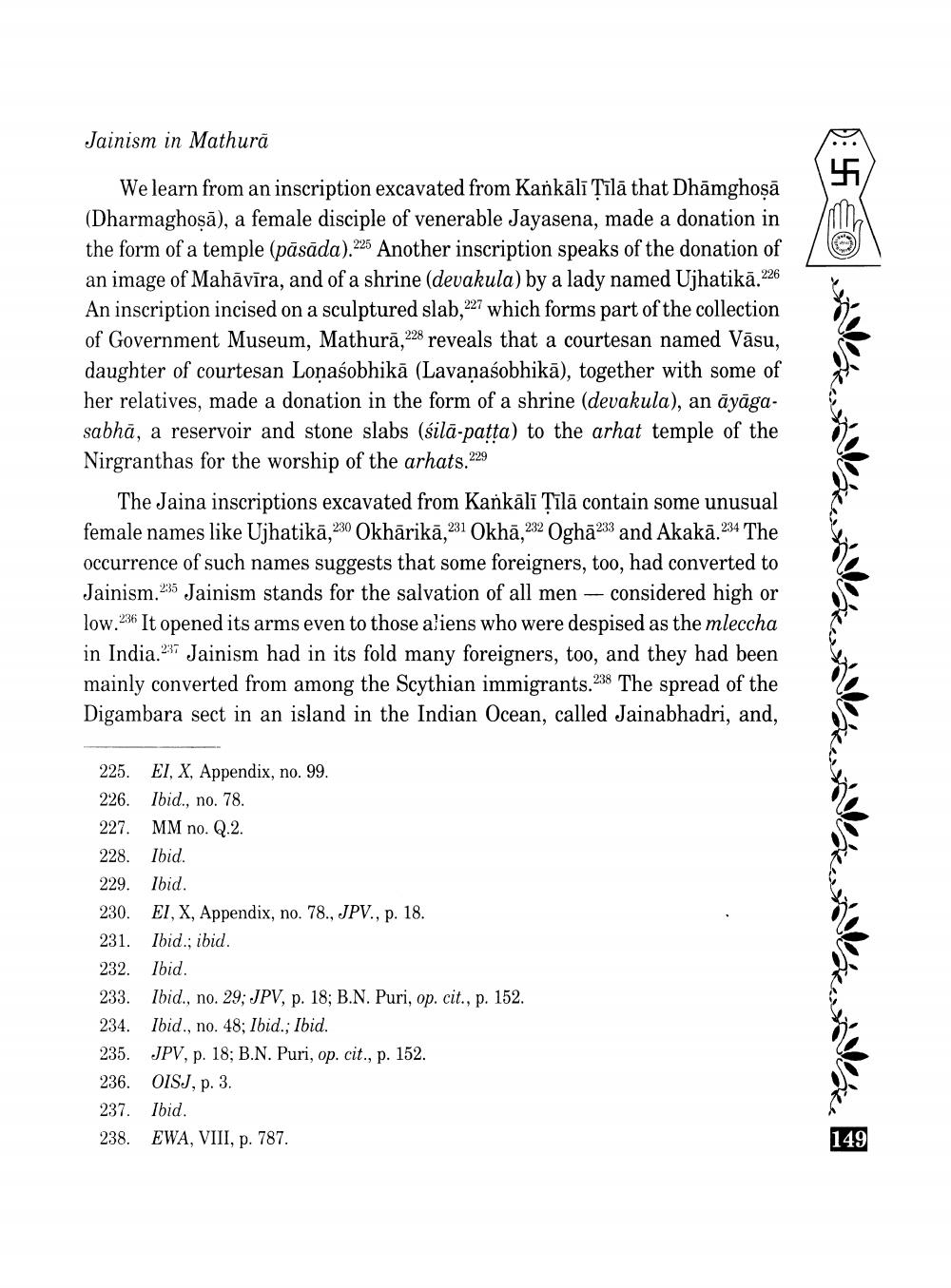________________
Jainism in Mathura
We learn from an inscription excavated from Kankāli Tilā that Dhāmghosā (Dharmaghosā), a female disciple of venerable Jayasena, made a donation in the form of a temple (pāsāda).225 Another inscription speaks of the donation of an image of Mahāvīra, and of a shrine (devakula) by a lady named Ujhatikā.226 An inscription incised on a sculptured slab,227 which forms part of the collection of Government Museum, Mathurā,228 reveals that a courtesan named Vāsu, daughter of courtesan Loņasobhikā (Lavaņasobhikā), together with some of her relatives, made a donation in the form of a shrine (devakula), an āyāgasabhā, a reservoir and stone slabs (silā-patta) to the arhat temple of the Nirgranthas for the worship of the arhats.229
The Jaina inscriptions excavated from Kaňkālī sīlā contain some unusual female names like Ujhatikā,230 Okhārikā,231 Okhā,232 Oghā233 and Akakā.234 The occurrence of such names suggests that some foreigners, too, had converted to Jainism.235 Jainism stands for the salvation of all men - considered high or low.234 It opened its arms even to those aliens who were despised as the mleccha in India.27 Jainism had in its fold many foreigners, too, and they had been mainly converted from among the Scythian immigrants.238 The spread of the Digambara sect in an island in the Indian Ocean, called Jainabhadri, and,
225. EI, X, Appendix, no. 99. 226. Ibid., no. 78. 227. MM no. Q.2. 228. Ibid. 229. Ibid. 230. EI, X, Appendix, no. 78., JPV., p. 18. 231. Ibid., ibid. 232. Ibid. 233. Ibid., no. 29; JPV, p. 18; B.N. Puri, op. cit., p. 152. 234. Ibid., no. 48; Ibid.; Ibid. 235. JPV, p. 18; B.N. Puri, op. cit., p. 152. 236. OISJ, p. 3. 237. Ibid. 238. EWA, VIII, p. 787.
149




